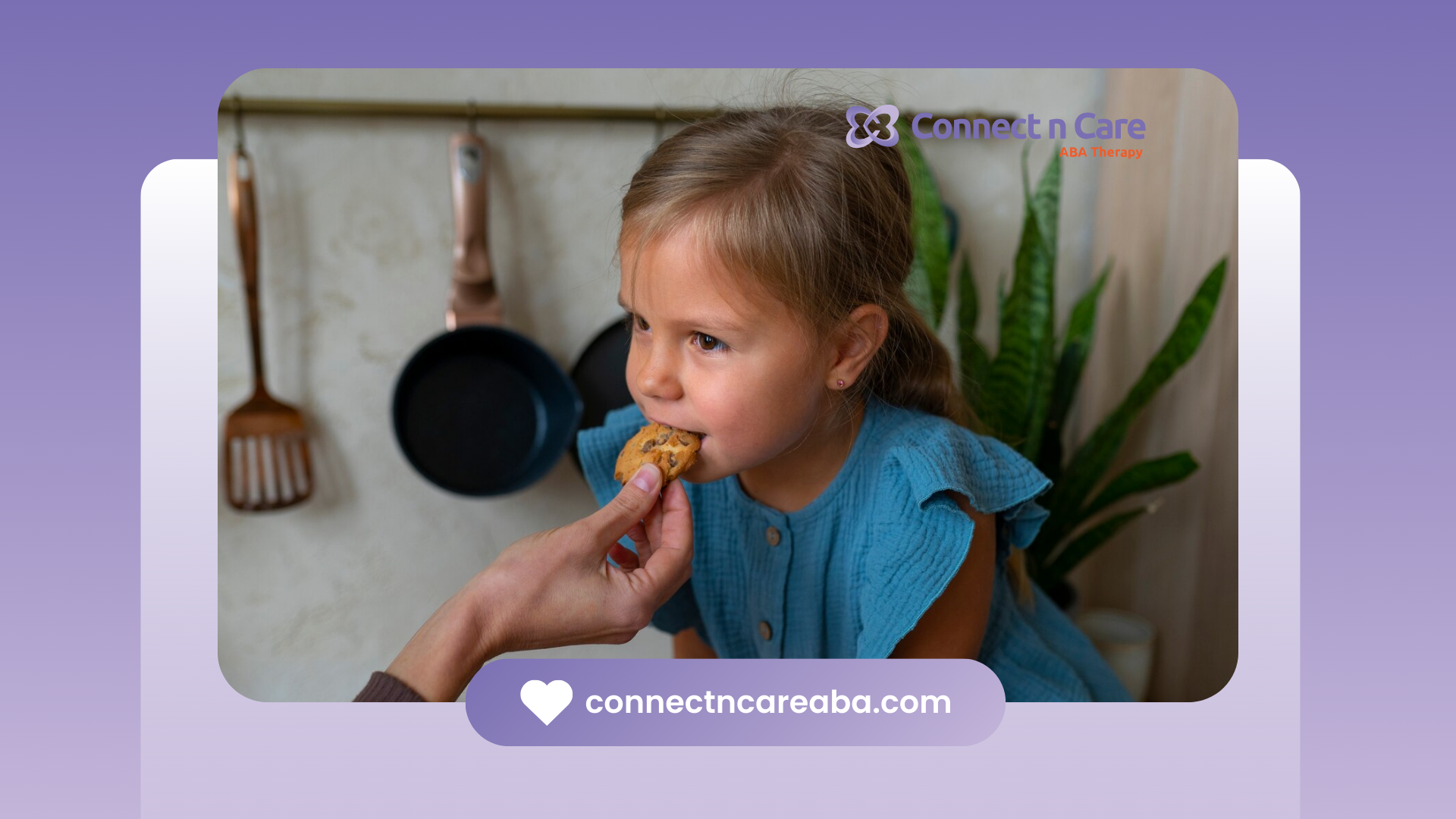Applied behavior analysis (ABA) provides many methods to change and improve behaviors. One key method is differential reinforcement, which is used to address challenging or undesirable behavior by encouraging appropriate behavior through the use of reinforcement. This blog post will look at the different types of differential reinforcement ABA, how they can be used, and the best ways to apply them to create real behavioral changes.
Understanding Differential Reinforcement in ABA
Differential reinforcement is a key idea in Applied Behavior Analysis (ABA). It helps increase good behaviors and decrease bad ones. This approach does not involve punishing negative behaviors. Instead, it smartly uses reinforcement to change behavior patterns.
When we understand and use these ideas, we can boost good behaviors and lower bad ones. This way, people can succeed in different parts of their lives.
Definition and Purpose
Differential reinforcement is a key idea in behavior analysis. It is a method to help increase good behavior and reduce bad behavior. Instead of just trying to stop a behavior, this method teaches and rewards better choices.
This idea understands that behavior is learned and kept up by what happens afterward. If a behavior gets a good result (like a reward), it is more likely to happen again. However, if it gets a bad result (like punishment) or no result, it will probably not happen again.
By rewarding good behavior and not giving rewards for bad behavior, differential reinforcement aims to change a person’s actions toward more positive and acceptable behaviors.
Key Components of Differential Reinforcement
Differential reinforcement has two main parts: positive reinforcement and finding a replacement behavior. Positive reinforcement means giving a reward right after the desired behavior happens. This reward can be something that the person enjoys, like praise, a gift, or doing a fun activity.
The replacement behavior is the better behavior we want to encourage instead of the problem behavior. It’s important to pick a replacement behavior that serves the same purpose as the problem behavior. This means it should satisfy the same need for the individual but in a better way.
If we keep rewarding the replacement behavior and not the problem behavior, we can lower the unwanted behavior and increase the good one.
Types of Differential Reinforcement ABA
Differential reinforcement includes different techniques to change specific behaviors. This article looks at three main types: Differential Reinforcement of Alternative Behavior (DRA), Differential Reinforcement of Incompatible Behavior (DRI), and Differential Reinforcement of Other Behavior (DRO). Each type uses a different method to reduce or replace bad behaviors.
By understanding DRA, DRI, and DRO, teachers, therapists, and parents can choose the best method for their needs. This helps them address the specific behavior that needs changing.
Differential Reinforcement of Alternative Behavior (DRA)
Differential Reinforcement of Alternative Behavior (DRA) is a method that focuses on rewarding good behavior, especially in young children. At the same time, it does not reward bad behavior. The goal is to replace unwanted actions with better ones through the use of a DRA procedure. By giving rewards for the right behavior, like using functional communication rather than acting out, young children can learn to show good behavior instead.
DRA is very helpful in behavior analysis. It is especially useful for people with autism spectrum disorder and developmental disabilities. It helps them develop new skills in a natural environment through the use of targeted behavior reinforcement. This process uses positive reinforcement to support good behavior.
Differential Reinforcement of Incompatible Behavior (DRI)
Differential Reinforcement of Incompatible Behavior (DRI) is a way to reward actions that cannot happen at the same time as unwanted actions. This means you will only reinforce good behaviors that make it hard to do the undesired ones. For example, if a person reads a book instead of watching TV, the watching will decline.
DRI ABA helps to reduce problem behavior by pushing for positive choices. Many people use this method in Applied Behavior Analysis to solve different behavior problems. DRI ABA looks to promote actions that won't allow the problem behavior to continue, leading to real changes in behavior.
Differential Reinforcement of Other Behavior (DRO)
Differential Reinforcement of Other Behavior (DRO) is a method used in Applied Behavior Analysis (ABA). In this technique, people receive reinforcement after a set time when the undesired behavior does not happen. The goal is to lower bad behaviors by rewarding any behavior that is not the unwanted one.
By using DRO procedures, behavior analysts help encourage positive replacement behaviors. This way, they can reduce bad actions and improve behavior for individuals partaking in behavior analysis plans, making it a crucial behavior reduction procedure in ABA therapy.
What is DRI vs DRO vs DRA in ABA?
In Applied Behavior Analysis (ABA), picking the right differential reinforcement approach depends on knowing the differences between DRI, DRO, and DRA. Each method helps shape behavior by rewarding good actions.
DRA supports an alternative behavior by giving rewards for it. DRI ABA reinforces a behavior that goes against the bad one, so a person can't do both at the same time. DRO, however, rewards the lack of bad behavior for a set period.
How DRA Encourages Positive Behavior
Differential Reinforcement of Alternative Behavior (DRA) helps people change bad behaviors into good ones by using positive support. It understands that tough behaviors usually have a reason for the person. DRA shows how to meet that same need in a better way.
When DRA rewards the preferred behavior regularly, it makes that behavior more likely to happen. The person sees that doing the new behavior brings good results, which means they will do it again in the future.
In short, DRA helps people change their behavior positively. This leads to a nicer environment and better social skills, along with personal growth.
The Role of DRI in Reducing Challenging Behaviors
Differential Reinforcement of Incompatible Behavior (DRI) is a strong method used in Applied Behavior Analysis (ABA) to reduce unwanted behaviors. It works by encouraging actions that are the opposite of those undesirable behaviors. This makes it impossible for someone to do both at the same time.
When we reward the incompatible behavior, it lowers the chances of the unwanted behavior happening. It also helps to make the better behavior stronger. If we keep supporting the incompatible behavior, we will see less of the challenging behavior over time. This means there will be fewer times that it happens, and when it does, it will be less intense and last for a shorter time.
For DRI to work well, it is important to find an incompatible behavior that meets the same need or serves a similar purpose for the person. This way, the new behavior is both meaningful and motivating for them.
Utilizing DRO to Reinforce the Absence of Behavior
Differential Reinforcement of Other Behavior (DRO) is a helpful method in Applied Behavior Analysis (ABA). It works by rewarding the absence of a specific unwanted behavior during a designated time period. Instead of promoting a competing behavior, DRO aims to reduce the target behavior by encouraging any other good behavior within a set time. This can be particularly effective for individuals who engage in a wide variety of topographies of inappropriate behavior.
When a behavior is absent, giving reinforcement helps the person focus on doing better things or acting in positive ways. DRO is powerful because it is simple and can be used in many situations. It is great for cutting down behaviors that are hard to change into a certain alternative.
Although DRO does not teach a new behavior directly, it helps make better responses possible. This is done by creating a space where not showing the target behavior gets rewarded time and time again.
Comparing DRA, DRI, and DRO
The three types of differential reinforcement ABA are DRA, DRI, and DRO. All of them aim to increase good behaviors and reduce bad ones. However, they work in different ways and are suitable for different situations.
It is important to know these differences. This helps you choose the best method based on a person's needs, the behavior that needs changing, and the goals of the intervention. Let’s look closely at the similarities and differences between DRA, DRI, and DRO. This will help us understand when to use each method effectively.
Similarities and Differences
While all three differential reinforcement procedures aim to decrease problem behavior by reinforcing desirable behavior, they each employ a unique approach. Here’s a closer look at their similarities and differences:
- Similarities: All three methods involve identifying a target behavior for reduction and selecting an appropriate replacement behavior to be reinforced. Additionally, they all rely on consistent application and individualized adaptation for optimal outcomes.
- Differences:
| Type of Differential Reinforcement | Description | Example |
|---|---|---|
| DRA | Reinforces a specific, desirable behavior that serves as a replacement for the problem behavior. | Reinforcing a child for asking politely for a toy instead of grabbing it. |
| DRI | Reinforces a behavior that is physically incompatible with the problem behavior. | Reinforcing a child for sitting quietly with hands folded instead of running around the classroom. |
| DRO | Reinforces any behavior other than the problem behavior for a specific period. | Reinforcing a child for every five minutes they remain quiet and focused on their work. |
- Choosing the Right Strategy: Selecting the most effective approach depends on several factors, including the nature of the problem behavior, the availability of suitable replacement behaviors, and the individual’s learning style and preferences.
Choosing the Right Type for Specific Situations
Deciding which differential reinforcement method works best for a certain behavior takes careful thought about the person's needs and the situation. For example, DRA is often the best choice for teaching good communication skills in daily lives. It helps change a bad way of communicating, like tantrums, into a better one, like using words or pictures to ask for something.
DRI is very effective when the bad behavior can't happen at the same time as the good behavior. If someone with autism spectrum disorder makes repetitive hand movements, giving them praise for playing with a fidget toy can help lessen the unwanted actions.
DRO is useful when the aim is to lower the number of times a behavior happens without needing to teach a new action. For instance, if a child keeps interrupting while people talk, rewarding them for staying quiet for certain time intervals can help reduce those interruptions.
Implementing Differential Reinforcement Strategies
Effective use of differential reinforcement strategies relies on careful planning, regular execution, and ongoing checks. Before starting, it is important to find the target behavior, pick a suitable replacement behavior, and select the right type of differential reinforcement (like DRA, DRI, or DRO) based on what the person needs and the situation.
One type of differential reinforcement strategy is differential reinforcement of higher rates of behavior (DRH), which involves reinforcing a behavior that occurs at a higher rate than usual. Another type is differential reinforcement of low rates of behavior (DRL), which aims to decrease the frequency of undesired behaviors by reinforcing them only when they do not exceed a predetermined criterion. These strategies can be effective in increasing desired behaviors and decreasing unwanted behaviors.
Also, it is vital to be consistent when giving reinforcement and checking progress. This helps make sure the strategy is truly changing behavior. By planning and being systematic, teachers, therapists, and parents can use differential reinforcement to help bring about positive behavior changes in people of all ages and skills.
DRI DRO DRA Examples
Let's explore real-life examples that show how DRA, DRI, and DRO can help children learn skills in everyday situations:
- DRA: Think about a child who often has tantrums when they want a different toy. Using DRA, parents can ignore the tantrum and then praise the child when they ask for the toy using words, like saying, “Can I please have that toy?”
- DRI: Picture a child who has trouble staying seated during circle time. With DRI, the teacher can praise the child for sitting quietly with their hands in their lap, which makes it hard for them to run around.
- DRO: Consider a child who often shouts answers in class. For DRO, the teacher could set a timer for five minutes. If the child does not shout out during that time, they get a reward.
These methods support the skill acquisition of children effectively.
Tips for Successful Implementation
Successfully using differential reinforcement strategies depends on knowing some main ideas and using good methods. First, working together with a qualified behavior analyst or board-certified behavior analyst (BCBA) is important. A BCBA, or Board Certified Behavior Analyst, can do a full assessment to find out why the target behavior happens, pick suitable replacement behaviors, and create a specific intervention plan.
Second, being consistent is very important when giving reinforcement. The reinforcers you choose should be very motivating for the person and given right after the desired behavior occurs. It’s just as important to be consistent in not giving reinforcement for undesirable behavior to reduce it.
Finally, keeping track of progress and collecting data is key to seeing if the strategy works and making changes if necessary. By closely monitoring progress and using data to guide decisions, practitioners can increase the chances of getting good results and encouraging real behavior change.
Measuring the Effectiveness of Differential Reinforcement
Evaluating how well differential reinforcement procedures work depends on careful data collection and analysis. This process gives important information about how the intervention affects behavior. It helps in making smart choices about changing or adjusting the strategy.
By closely watching how often, how long, or how strong both good and bad behaviors are, practitioners can see if the chosen differential reinforcement procedure is really helping to change behavior in the right way.
Key Indicators of Success
The success of using differential reinforcement depends on careful tracking of progress and following proven practices. Important signs of success include less frequent, shorter, or weaker undesired behavior and more of the desired alternative behavior.
Experts in applied behavior analysis regularly share their findings in well-respected journals, like the Journal of Applied Behavior Analysis (JABA). These findings offer great insights into how different types of differential reinforcement ABA work for various people and behavior issues.
If data shows a real drop in problem behavior and a rise in desired behavior over time, it means the chosen strategy is working well. Still, it is important to remember that changes in progress can happen. This may mean we need to adjust the intervention plan based on how the individual responds and what the ongoing assessment data shows.
Adjusting Strategies Based on Outcomes
Differential reinforcement, like all therapy methods, needs flexibility and a focus on using data to make decisions. Regular checks of the collected data help professionals see how well the treatment is working. This way, they can make changes if needed.
If the data shows little or no improvement, it means it's time to look again at the intervention plan. This may include checking why the behavior happens, changing the type of differential reinforcement used, or altering the plan for how often and how much reinforcement is given. For example, if a child is not benefiting from Differential Reinforcement of Alternative Behavior (DRA), moving to Differential Reinforcement of Higher Rates of Behavior (DRH) or incorporating punishment procedures may be necessary to see progress.
By focusing on data when making decisions, professionals show they want to adjust the therapies to fit the unique needs of each person. This can help make a real, long-lasting improvement in behavior outcomes.
Conclusion
In conclusion, it is important to understand the different types of differential reinforcement ABA. This understanding helps in using effective behavioral strategies. Whether using DRA, DRI, or DRO, each method has an important role in changing behavior. By picking the right type and using real-life examples that match the situation, you can encourage good behaviors and lessen the hard ones.
Checking how well these strategies work and making changes based on what you see is key to long-term success in changing behavior. Using these differential reinforcement techniques helps people make positive changes and creates a caring environment for growth and improvement.
Connect n Care ABA specializes in providing comprehensive ABA therapy services tailored to the unique needs of each child. Our experienced therapists utilize differential reinforcement strategies to promote positive behaviors and reduce problem behaviors. With a focus on early intervention and evidence-based practices, we help children reach their full potential. Contact Connect n Care ABA today to learn more about our best ABA therapy services in North Carolina and how we can support your child's journey.
Frequently Asked Questions
How do I choose between DRA, DRI, and DRO?
Deciding whether to use DRA, DRI, or DRO requires careful thought about personal needs and behavior goals. You also need to think about the environment. A detailed behavior assessment can help you understand why a behavior happens. This will help in picking the best method to use.
Can differential reinforcement be used for all behaviors?
Differential reinforcement is a useful strategy for many types of behavior. But it does have limits. It's important to think about personal differences, how skills can be applied in different situations, and possible unexpected issues.









